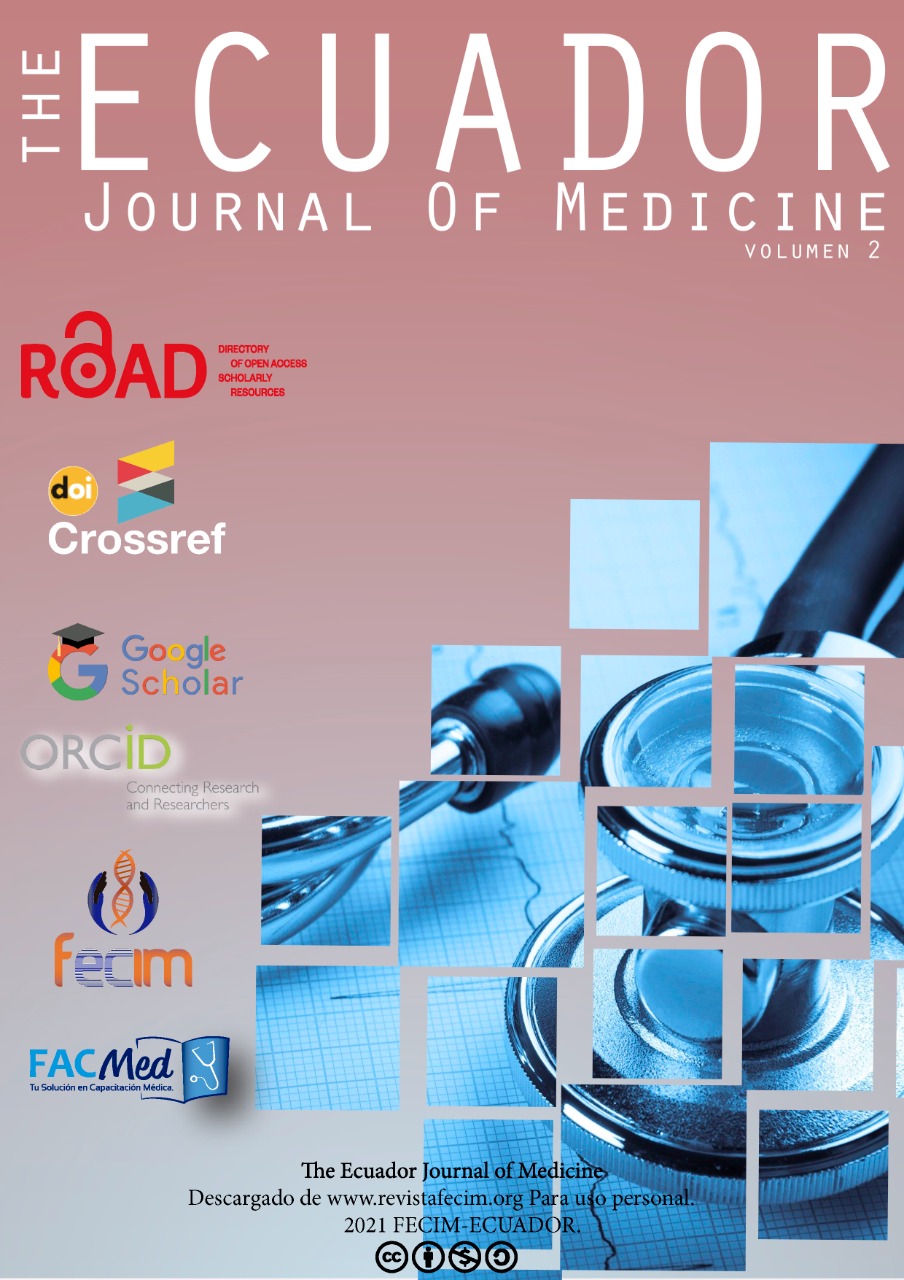Self-medication and consumption of energy drinks in students from medical school and other faculties, Universidad del Azuay 2013-2014
DOI:
https://doi.org/10.46721/tejom-vol2iss2-2021-23-31Keywords:
self-medication, stimulants, drugs, beveragesAbstract
Objective: Compare self-medication and consumption of energy drinks in students from medical school and other faculties of Universidad del Azuay
Materials and methods: A cross-sectional study on a simple of 502 students was conducted, 251 were from medical school (population) and 251 from other faculties; samples randomized in a population of 5800 students in a proportion to the number of members of each faculty. The data were obtained by means of a self-administered quetionnaire, and were analyzed in measures of central tendency, and frecuency tables. The comparisons were done using Chi-square test of Independence, taking as significant p value less 0.05.
Results: From the study group (502 students), 53.5% were women; the average age was 21 (DS ± 2,83), 94.1% were single. The group of medical students and other faculties were 21 as average age (p 0,081). The percentage of women was similar in both groups (56,6% y 50,6%, p 0,179). 96.4% and 98% of medical students and other faculties respectively, cinsume some type of stimulant (p 0,278). The stimulant drug consumption (alertex, despertol, ritalin) was 52.2% among medical students and 37.5% in other faculties (p <0,001). The consumption of stimulating beverages was 92 a 94% (p 0,380). In medical students, 80% experienced adverse effects, and 73% (p 0,027) in other faculties.
Conclusion: Data regarding self-medication and consumption of stimulants in students from Universidad del Azuay is similar to other studies. Medical students consume more stimulanting tan the other faculties.
Downloads
Published
Issue
Section
License
Copyright (c) 2021 Natalia Estefanía Pacurucu Merchán, María Verónica Muñoz Arteaga

This work is licensed under a Creative Commons Attribution-NonCommercial-ShareAlike 4.0 International License.





